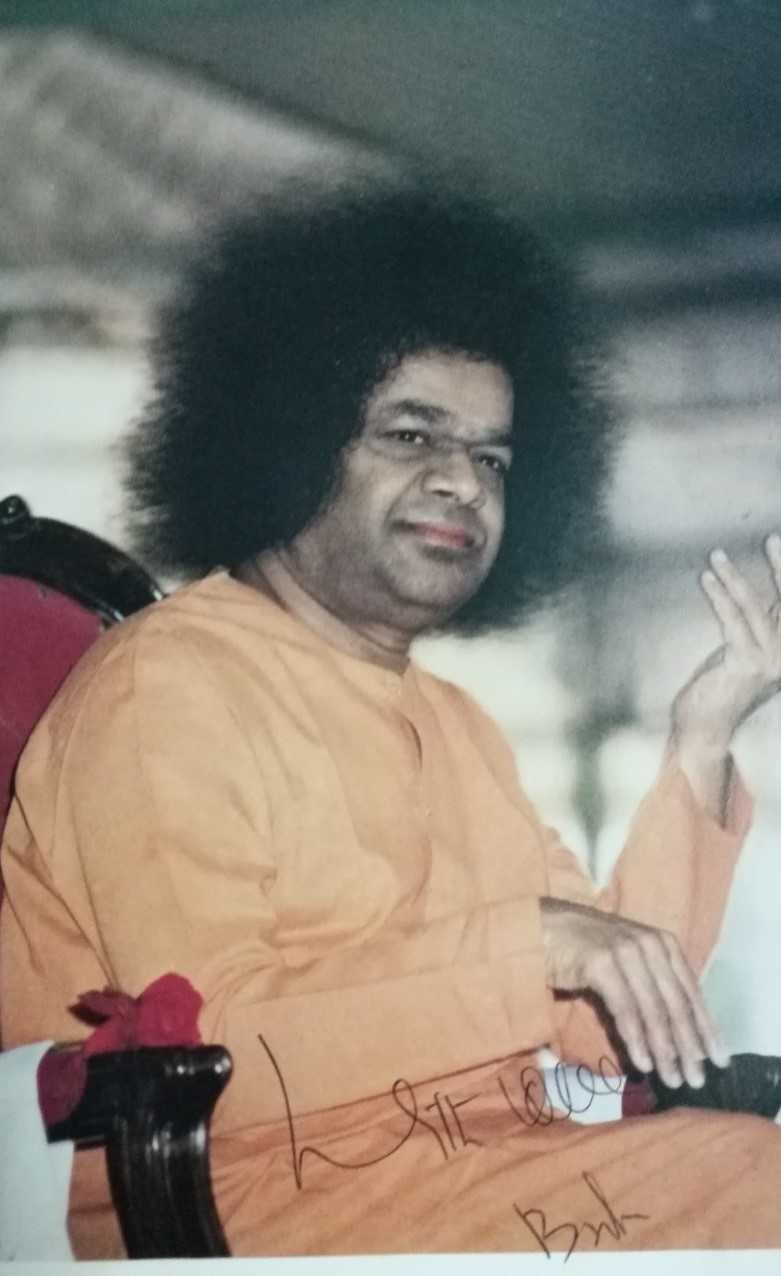
(Vishvarupa of Vishnu as the Cosmic Man with the three realms: heaven - Satya to Bhuvar loka (head to belly), earth - Bhu loka (groin), underworld - Atala to Patala loka (legs). - Wiki)
The place where the Lord assumed the Cosmic form (Trivikrama) is known as Siddhashram. This Siddhashram is in every human being. The intelligence in man is his spiritual essence. The Vamana avathaara is the divine principle in man. The ego arising out of man’s consciousness represents Bali. The navel in which Divinity resides is the Siddhashram. It is called Siddhashram because it is the place where all aspirations are realised.
The three feet of ground Vamana sought from Bali are: Bhuloka, Bhuvarloka and Swarloka. Bhuloka means the entire world constituted by the five senses and the five vital airs. Bhuvarloka represents the subtle life force that is present in the atmosphere enveloping the world. It is the world of Prana (Life-force). Swarloka is the Atma (divine soul), the consciousness that permeates everything from the atom to the vastest thing in the Cosmos. These three worlds are not one upon the other. They inter-penetrate each other, the Swarloka permeates the Bhuvarloka and the latter penetrates the Bhuloka. The three worlds represent symbolically the three bodies of man the gross body, the mental body and the causal body.
Man must move forward from the gross body to the mental path and from the mental to the Atmic State (Self-realisation). The inner meaning of the Onam celebration is that man must destroy the ego and achieve Self-realisation. (SSS Vol.16, p. 123)
The ‘three feet’ of space that the Lord wished to accept and sanctify after magnifying Himself into Trivikrama (Three-fold conqueror), are often identified as the Earth, Space and Outer-space, the Bhuloka, the Bhuvarloka and the Swarloka. But, the Lord, who has projected the Cosmos by His own will, does not crave for a fraction of His own creation. Nor are the three lokas situated one over the other. They are regions of consciousness, existing contemporaneously in Bali and everyone else. When you pay attention to the Lokas, the individual personality does not impinge on your attention; when the individual personality is cognised, the Lokas recede from view.
When you look upon this chair as chair, you are not aware of the word; when you observe the word; the chair passes out of view. Take the instance of the idol of Shirdhi Sai Baba in silver. When you adore it as Sai Baba, you are not aware of the silver; when you know it as so much silver, you exclude Sai Baba. So, too, when man concentrates on the Bhuloka in him, the other two are beyond cognition.
The Bhuloka in man is the Dehaloka (the physical home of body which he carries about and in which he resides). The Bhuvarloka in him is the Prana loka (the vital equipment or sheath that activates the Bhuloka and the principle of consciousness encased therein) and the Swarloka is the inner treasure chest, the Ananda (delight), which prompts by its very presence the spiritual bud to blossom. Vamana sought Bali’s willing acquiescence in the Divine Process of purifying and sanctifying these three levels of his being- the Body, the Awareness and the Cosmic Essence. Vamana spoke of this blessing, symbolically, as three ‘foot-measures’ of land! And, Bali, unaware of the inner meaning, agreed to give Vamana what obviously He wanted. He was indeed in great ecstasy at the unique chance to offer to the Lord what He claimed out of what He had himself given!
Vamana assumed His Cosmic Form and measured the three steps, covering the Cosmos, including Bali. Bali surrendered totally to the Divine Will; he was amply rewarded. He lived up to the heritage handed down to him by his father Virochana and grandfather Prahlada. The Bhagavata Purana declares that he was consigned to Sutala, the most sacred of the nether regions. In other words, Bali was blessed with an inner vision of the Lord in his heart. The Lord assured him that He would grant him His constant presence in the Sutala region. The Message of Onam is that the Lord is won by means of total surrender of the ego. When the heart is pure, the Lord resides therein and guides man to Himself. (SSS Vol.17, pp. 138-139)
